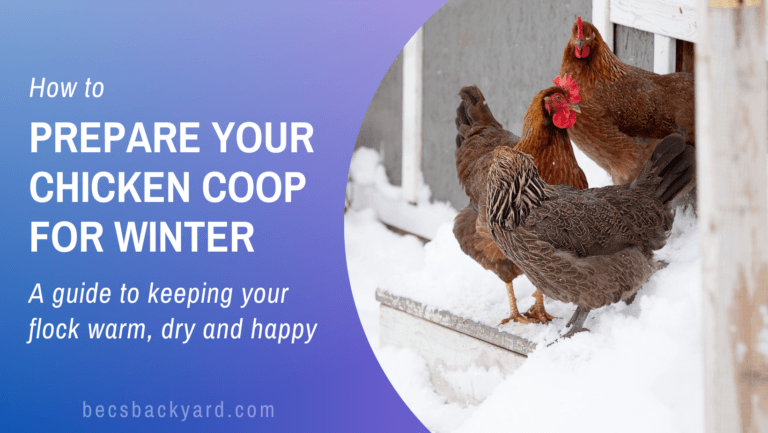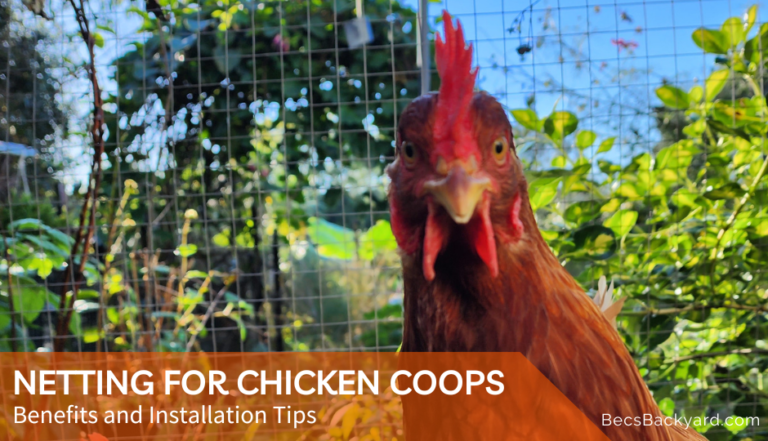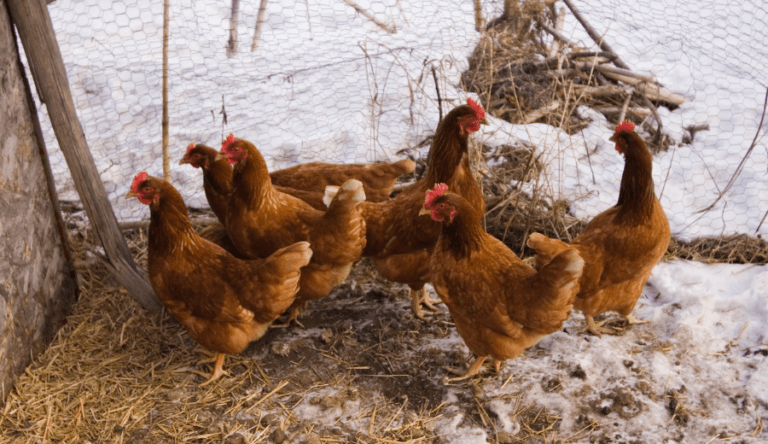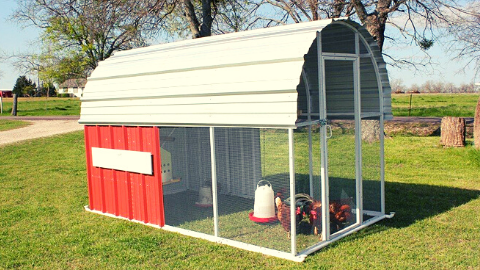Ventilation for a Chicken Coop: Tips and Best Practices

Proper ventilation for a chicken coop is essential. Chickens need fresh air to breathe and to regulate their body temperature. Without proper ventilation, the air inside the coop can become stagnant, leading to a buildup of moisture, ammonia, and other harmful gases that can harm your birds’ health.
There are several factors to consider when it comes to chicken coop ventilation, such as the size of your coop, the number of birds you have, the climate in your area, and the materials your coop is made of. Fortunately, there are many different ventilation options available, from simple vents and windows to more advanced systems like cupolas and fans. By understanding the basics of chicken coop ventilation and choosing the right ventilation system for your coop, you can help ensure that your birds stay healthy and comfortable.
In this article, we will explore the importance of proper ventilation in a chicken coop and the different ventilation options available. We will discuss the benefits of good ventilation, the risks of poor ventilation, and the factors to consider when choosing a ventilation system. Additionally, we will provide tips and strategies for maintaining good ventilation and avoiding common ventilation-related problems. Whether you are a seasoned chicken keeper or just starting out, this article will provide you with the knowledge you need to keep your birds healthy and happy.
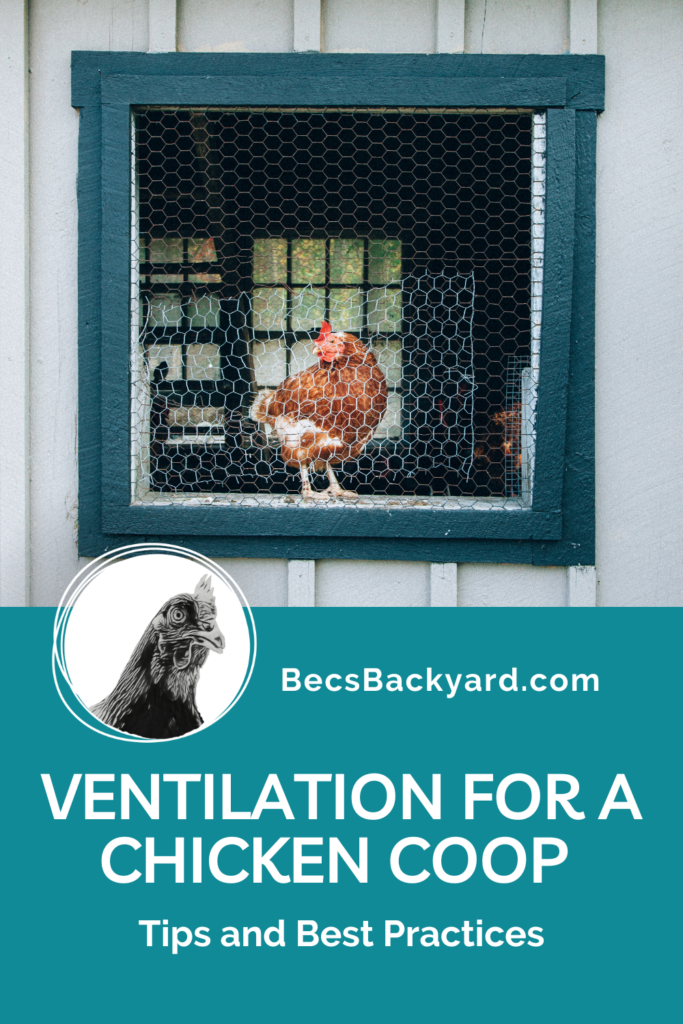
Why Ventilation is Important for Chicken Coop
Proper ventilation is essential for maintaining a healthy and comfortable environment for your chickens. A well-ventilated chicken coop provides fresh air, removes moisture, and reduces the growth of harmful molds, bacteria, and viruses. In this section, we will explore the reasons why ventilation is important for chicken coops and its benefits.
Prevent Moisture Buildup
Moisture buildup is a common problem in chicken coops, especially during the winter months. When chickens exhale, they release moisture into the air, which can cause condensation to form on the walls and roof of the coop. This can lead to mold growth, which can be harmful to both chickens and humans.
Proper ventilation helps to prevent moisture buildup by allowing fresh air to circulate through the coop. This helps to remove excess moisture and prevent condensation from forming. It also helps to keep the coop dry and reduces the risk of mold growth.
Reduce Ammonia Levels
Ammonia is a gas that is produced when chicken droppings break down. It can be harmful to chickens and humans, causing respiratory problems and eye irritation. Ammonia is also a strong odor that can make the coop unpleasant to be around.
Proper ventilation helps to reduce ammonia levels in the coop by allowing fresh air to circulate through the coop. This helps to remove ammonia gas and keep the air fresh and clean. It also helps to keep the coop odor-free, making it a more pleasant environment for both chickens and humans.
Prevent Overheating
During the summer months, the temperature inside a chicken coop can rise quickly, especially if it is poorly ventilated. This can lead to overheating, which can be harmful to chickens and cause them to become stressed.
Proper ventilation helps to prevent overheating by allowing hot air to escape from the coop and bringing in fresh, cool air. This helps to regulate the temperature inside the coop and keep it at a comfortable level for your chickens.
Proper ventilation is essential for maintaining a healthy and comfortable environment for your chickens. It helps to prevent moisture buildup, reduce ammonia levels, and prevent overheating. By ensuring that your chicken coop is well-ventilated, you can help to keep your chickens healthy and happy.
Factors to Consider for Ventilation
When it comes to ventilation for a chicken coop, there are several factors that need to be considered. Proper ventilation is crucial for the health and well-being of your chickens, as it ensures that they have access to fresh air and reduces the risk of respiratory problems. Here are some factors to consider when planning the ventilation for your chicken coop:
Size of the Coop
The size of your chicken coop will play a significant role in determining the amount of ventilation needed. A larger coop will require more ventilation to ensure that there is enough fresh air circulating throughout the space. As a general rule of thumb, you should aim for at least 1 square foot of ventilation per bird.
Number of Chickens
The number of chickens in your coop will also impact the amount of ventilation needed. More chickens mean more moisture and ammonia in the air, which can lead to respiratory problems if not properly ventilated. As a general rule of thumb, you should aim for at least 1 square foot of ventilation per bird.
Climate and Weather Conditions
The climate and weather conditions in your area will also impact the ventilation needs of your chicken coop. If you live in a hot and humid climate, you will need more ventilation to ensure that the air is circulating and reducing the risk of heat stress. On the other hand, if you live in a colder climate, you will need to balance the need for ventilation with the need to keep your chickens warm.
In summary, when planning the ventilation for a chicken coop, it is essential to consider the size of the coop, the number of chickens, and the climate and weather conditions in your area. By taking these factors into account, you can ensure that your chickens have access to fresh air and reduce the risk of respiratory problems.
Types of Ventilation
When it comes to chicken coop ventilation, there are three main types: natural ventilation, mechanical ventilation, and a combination of both.
Natural Ventilation
Natural ventilation is the simplest and most cost-effective way to ventilate a chicken coop. It involves using openings in the coop to allow air to flow through naturally. This can be achieved by using windows, vents, or even just leaving the coop door open during the day.
One of the most common forms of natural ventilation is the use of pop doors. These doors are typically located near the base of the coop and allow fresh air to enter, which then rises to vents located higher up where it can exit the coop. Other forms of natural ventilation include wall-roof gaps, cupolas, and skylight vents.
Mechanical Ventilation
Mechanical ventilation involves using fans or other mechanical devices to move air in and out of the coop. This type of ventilation is often used in larger coops or in areas with extreme weather conditions.
There are several types of mechanical ventilation systems available, including exhaust fans, circulation fans, and misting systems. Exhaust fans are typically installed on the roof of the coop and draw air out of the coop, while circulation fans help to move air around inside the coop. Misting systems can be used to cool the air in the coop during hot weather.
Combination of Natural and Mechanical Ventilation
Many chicken keepers choose to use a combination of natural and mechanical ventilation to ensure that their coop is properly ventilated. This approach can provide the benefits of both types of ventilation while minimizing their drawbacks.
For example, a combination of pop doors and exhaust fans can help to ensure that fresh air is entering the coop while stale air is being removed. This can help to prevent moisture buildup and reduce the risk of respiratory issues in chickens.
In summary, choosing the right ventilation system for your chicken coop is essential for keeping your birds healthy and comfortable. Whether you choose natural ventilation, mechanical ventilation, or a combination of both, it’s important to ensure that your coop is properly ventilated to prevent issues like moisture buildup and respiratory problems.
Designing a Ventilation System
When it comes to designing a ventilation system for your chicken coop, there are a few key factors to consider. Proper ventilation is essential for the health and well-being of your chickens, as it helps to remove excess moisture, reduce the risk of respiratory issues, and prevent the buildup of harmful gases.
Placement of Vents
The placement of vents is critical for effective ventilation in your chicken coop. Vents should be located near the top of the coop to allow hot air to escape, while also preventing drafts that could make your chickens uncomfortable. It’s also essential to ensure that the vents are positioned in a way that allows for cross-ventilation, as this will help to circulate fresh air throughout the coop.
Size of Vents
The size of your vents is another crucial factor to consider when designing your ventilation system. Vents that are too small may not provide adequate airflow, while vents that are too large could create drafts that could be harmful to your chickens. As a general rule of thumb, your vents should make up at least 10% of the total floor area of your coop.
Fans and Airflow
In addition to vents, fans can also be an effective way to improve airflow in your chicken coop. Fans can help to circulate air more efficiently, which can be especially beneficial during hot summer months. When using fans in your coop, it’s important to ensure that they are positioned in a way that does not create drafts or cause discomfort for your chickens.
Overall, designing an effective ventilation system for your chicken coop is essential for the health and well-being of your birds. By considering factors such as the placement and size of vents, as well as the use of fans, you can help to ensure that your chickens have access to clean, fresh air at all times.
Maintenance and Cleaning
Proper maintenance and cleaning of your ventilation for a chicken coop is crucial for ensuring the health and safety of your flock. Here are a few sub-sections to help you keep your ventilation system in good working order.
Regular Cleaning
Cleaning your ventilation system regularly will help prevent the buildup of dust, debris, and other contaminants that can block airflow and reduce the effectiveness of your system. Make sure to clean all components of your ventilation system, including fans, filters, vents, and ducts.
To clean your ventilation system, start by turning off the power and removing any covers or grilles. Use a soft-bristled brush or vacuum to remove any debris from the fan blades, motor, and other components. You can also use a damp cloth to wipe down any surfaces that have accumulated dust or grime.
Replacing Filters and Fans
Filters and fans are critical components of your ventilation system, and they should be replaced regularly to ensure optimal performance. The frequency of replacement will depend on the type of filter or fan you are using and the conditions in your coop.
When replacing filters, make sure to choose the appropriate type and size for your ventilation system. Some filters are washable and reusable, while others are disposable and should be replaced regularly. Check the manufacturer’s recommendations for your specific filter.
When replacing fans, make sure to choose a fan that is appropriate for the size of your coop and the ventilation requirements of your flock. Make sure to follow the manufacturer’s instructions for installation and wiring.
Monitoring Ventilation System
Regular monitoring of your ventilation system will help you identify any problems or issues before they become serious. Keep an eye out for any unusual noises, vibrations, or odors coming from your ventilation system. You should also monitor the temperature and humidity levels in your coop to ensure that your ventilation system is providing adequate airflow.
If you notice any problems with your ventilation system, make sure to address them promptly. Ignoring problems can lead to reduced airflow, increased humidity, and other issues that can impact the health and safety of your flock.
Conclusion
In conclusion, proper ventilation for a chicken coop is crucial for the health and well-being of your feathered friends. This blog post has explored the importance of ventilation, providing insightful tips and techniques to ensure optimal airflow within the coop. By implementing the suggested strategies such as installing vents, windows, and fans, as well as keeping an eye on humidity levels, you can create a comfortable and safe environment for your chickens. Remember, good ventilation helps regulate temperature, removes harmful gases, and reduces the risk of respiratory diseases. So, prioritize ventilation for a chicken coop to promote happy and thriving chickens.

